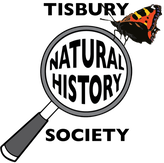|
Much has been said about the need to plant more trees to help to lock up carbon to help address climate change. So, it is particularly upsetting to see recently planted trees that have died during our dry summer and others weakened by the drought shedding their leaves early. This stress is in addition to the natural diseases with which they must contend as a matter of course.
Unfortunately, there are also diseases which, in our global economy, were imported from abroad accidentally. One such is the fungus that causes Ash Dieback. This was first identified in the UK in 2012 although there is evidence that it has been present in Europe for 30 years. It originates in Asia where it does little damage to the local ash species, but our ash - Fraxinus excelsior - has no natural defences to it. Ash is a common species and makes up around 12% of Britain’s broadleaved woodland so its loss will have a significant impact on the landscape. It is estimated that up to 80% of the trees will be killed, although as we are still the early stages of the epidemic, it is hard to judge. Whatever the losses, there will be an impact on those species of wildlife which rely upon ash. The disease can affect trees of all ages although young ones, and those growing in woodlands with high proportions of ash, seem to succumb most quickly. Trees growing in open locations such as streets or in hedgerows seem less susceptible and there appears to be a level of resistance in some trees which, although infected, survive. Local woodland managers have already been clearing ash trees and doubtless we will continue to see this in the years ahead. Those of us old enough to recall the dramatic change to the landscape caused by Dutch Elm Disease in the 1970’s will fear the long-term effect of Ash Dieback but will draw some comfort from the way that other species started to fill the gaps left when the elms were gone. But we must hope that further diseases do not erupt to thwart plans to increase our woodland cover as part of the essential work to lock up more carbon. by Andrew Graham Comments are closed.
|
Photo: Avocets (Izzy Fry)
The headers display photos taken by our members. Do get in touch via the Contact Form if you'd like to submit a photo for selection.
Archives
May 2024
Categories
All
|

 RSS Feed
RSS Feed